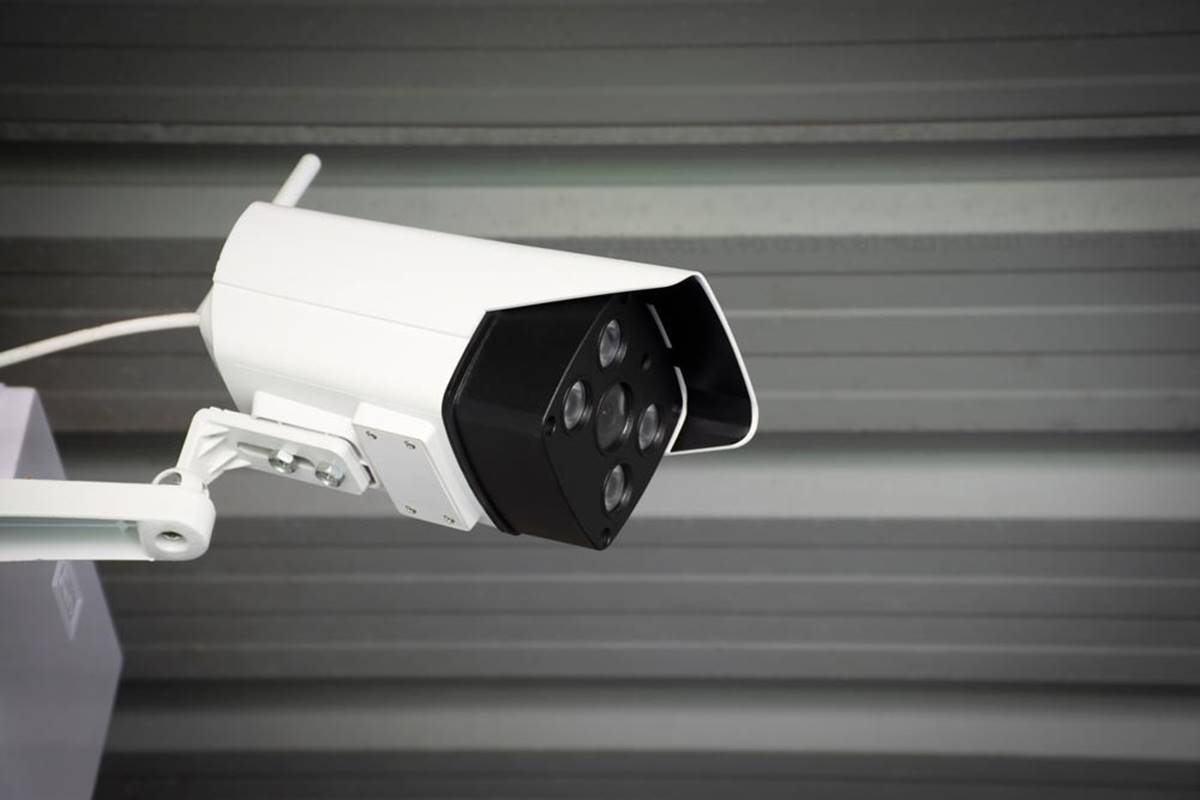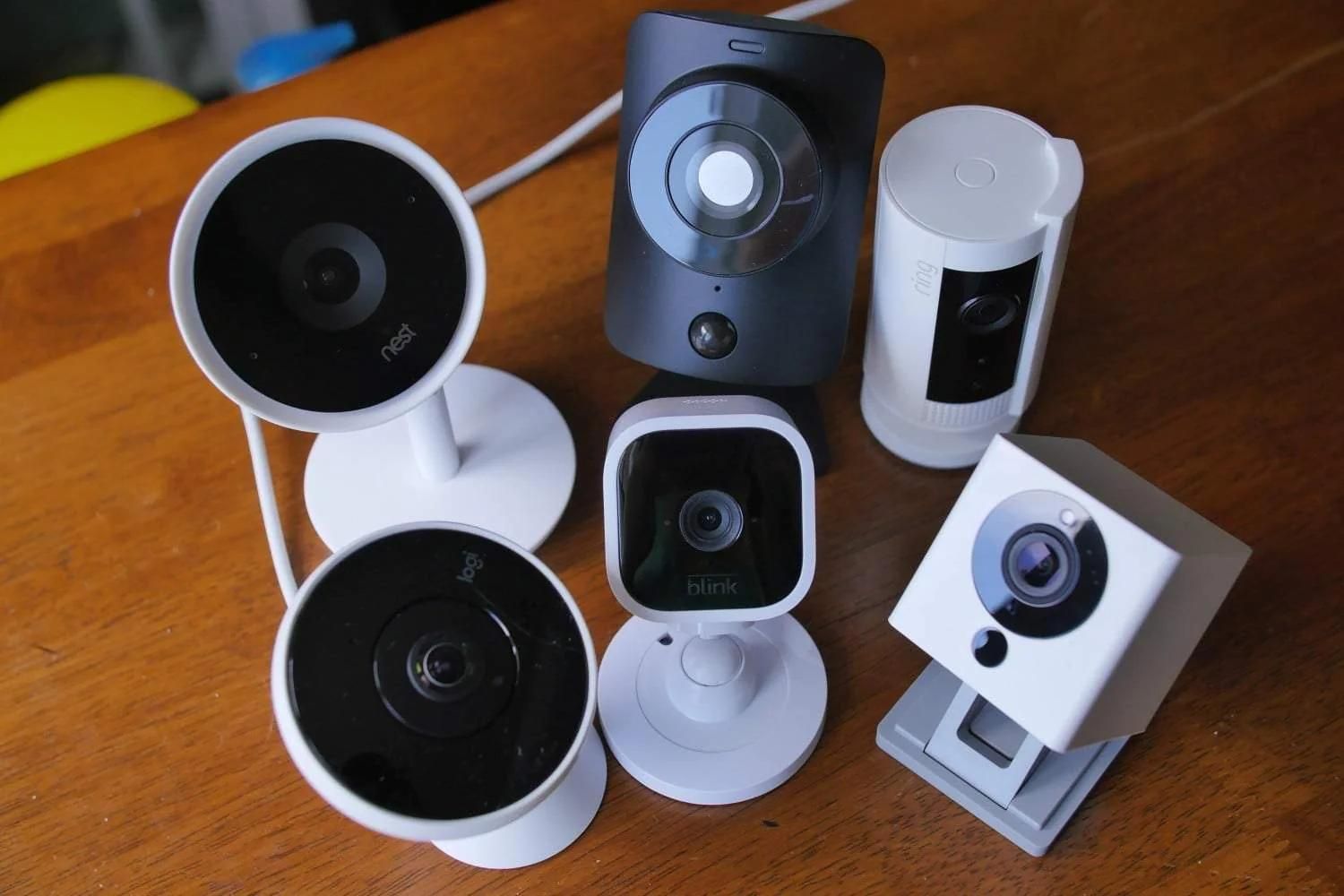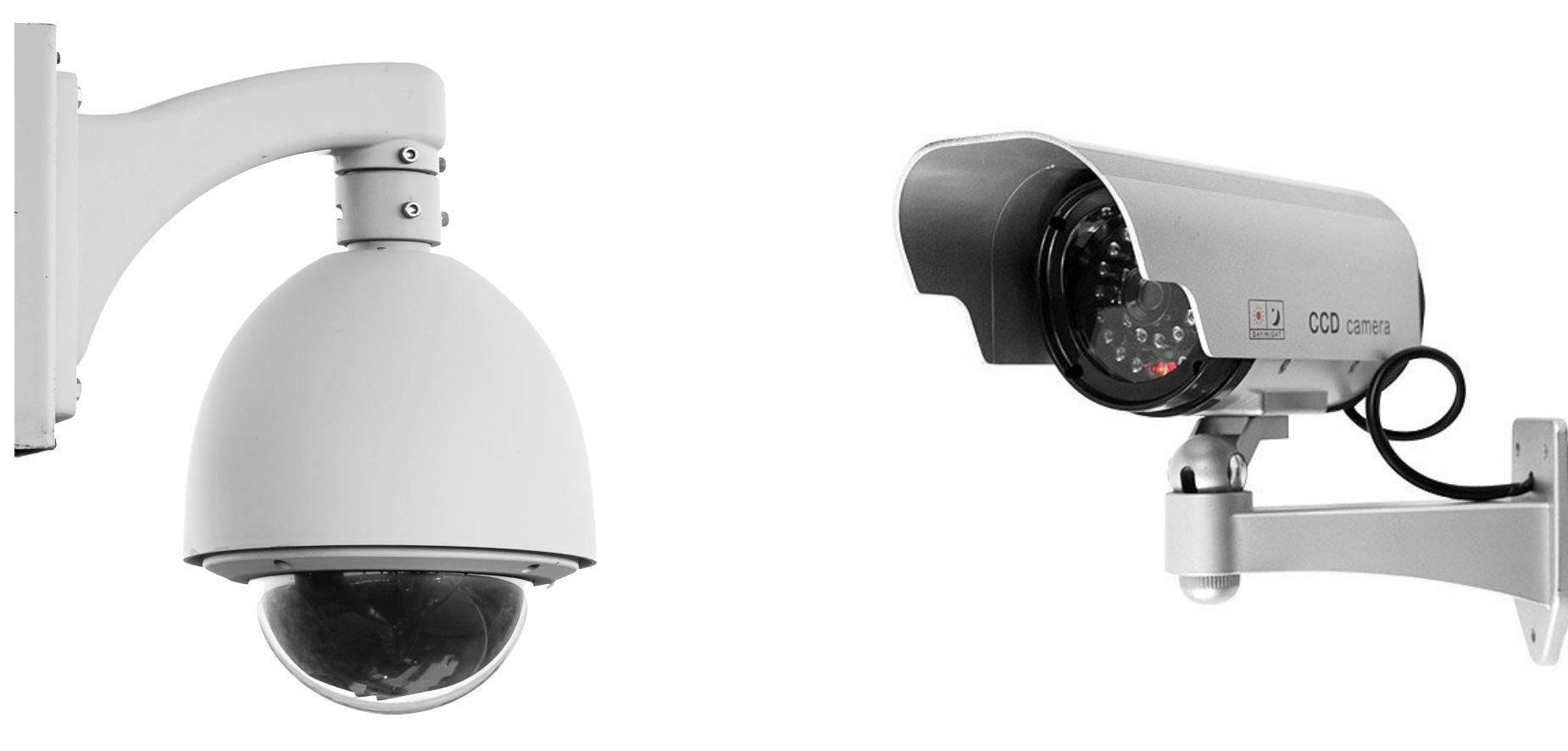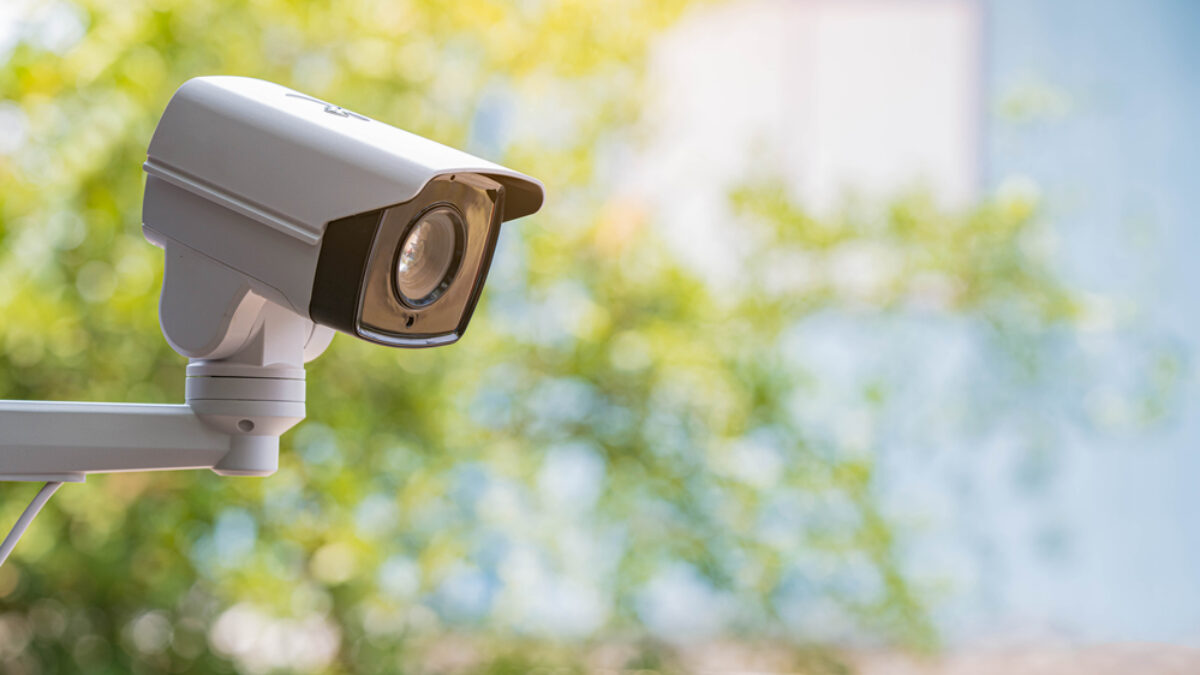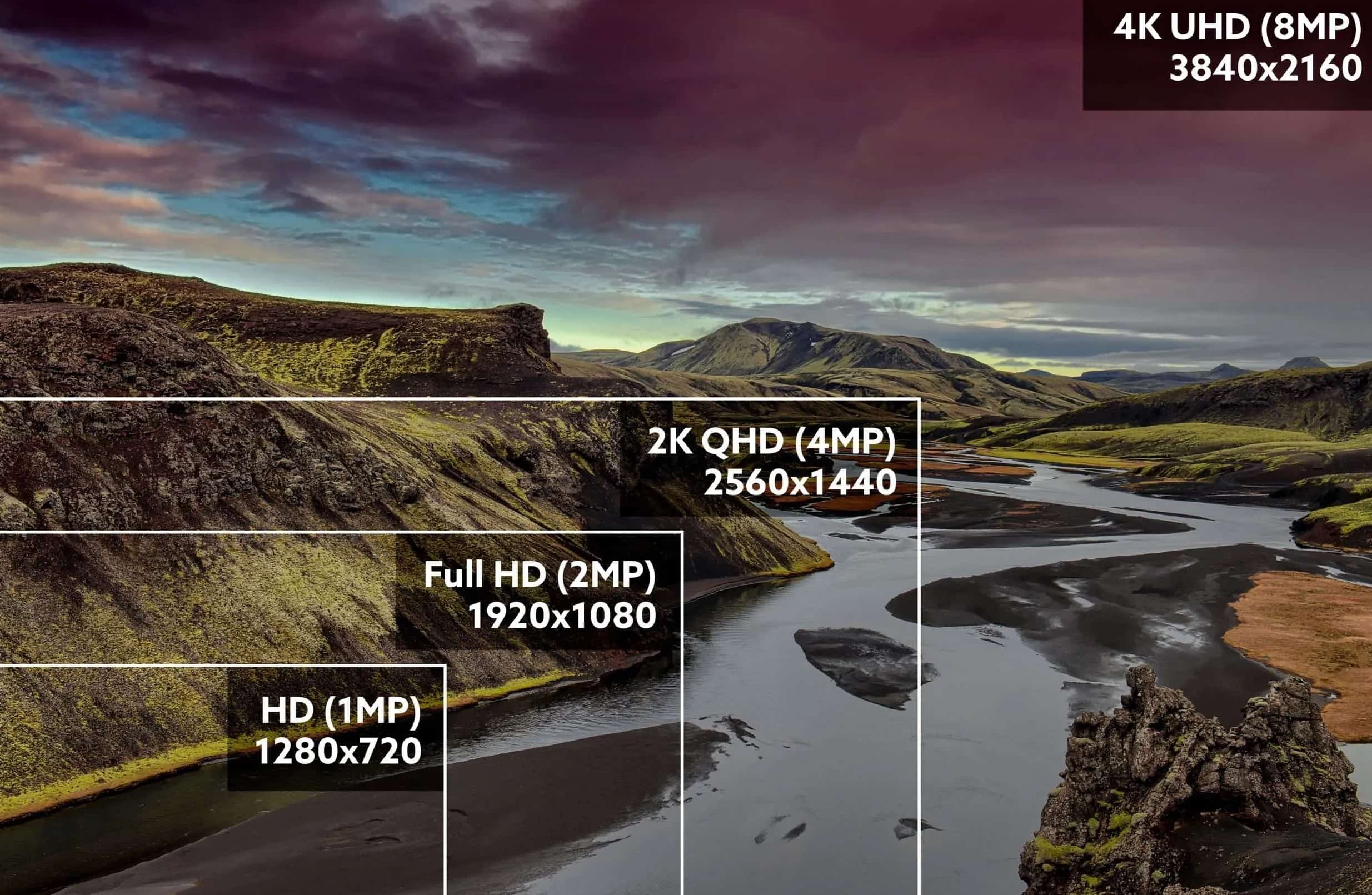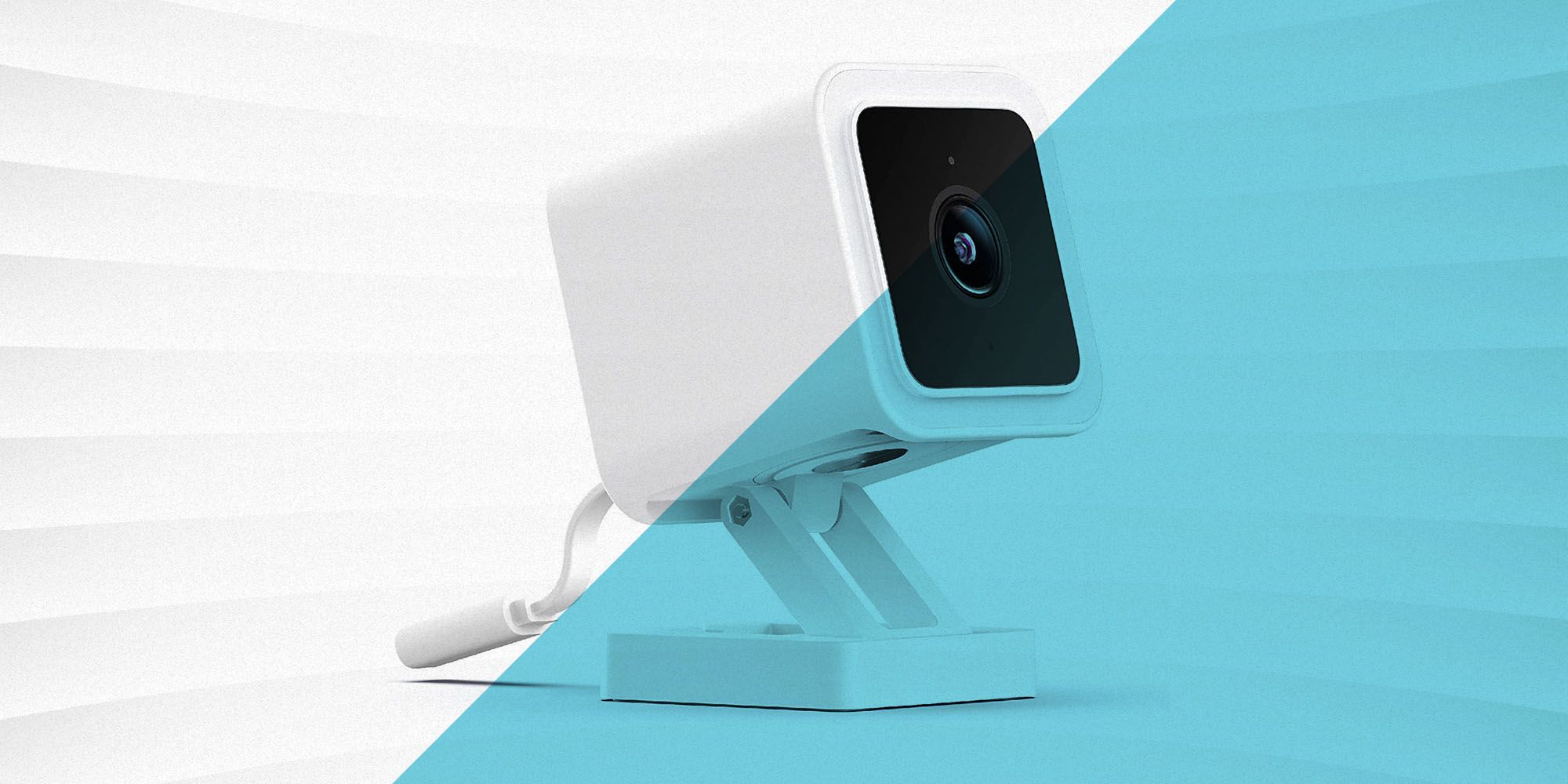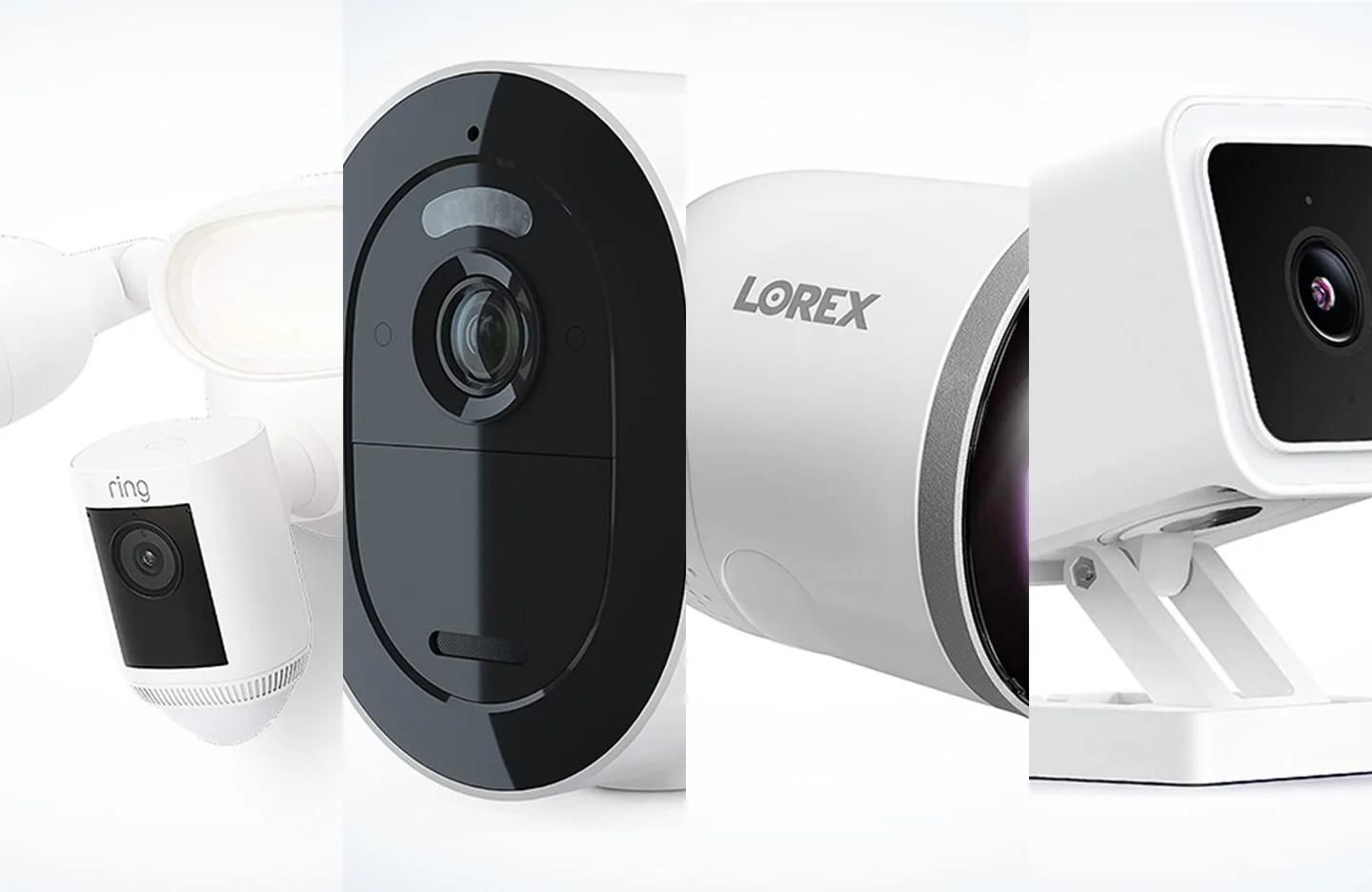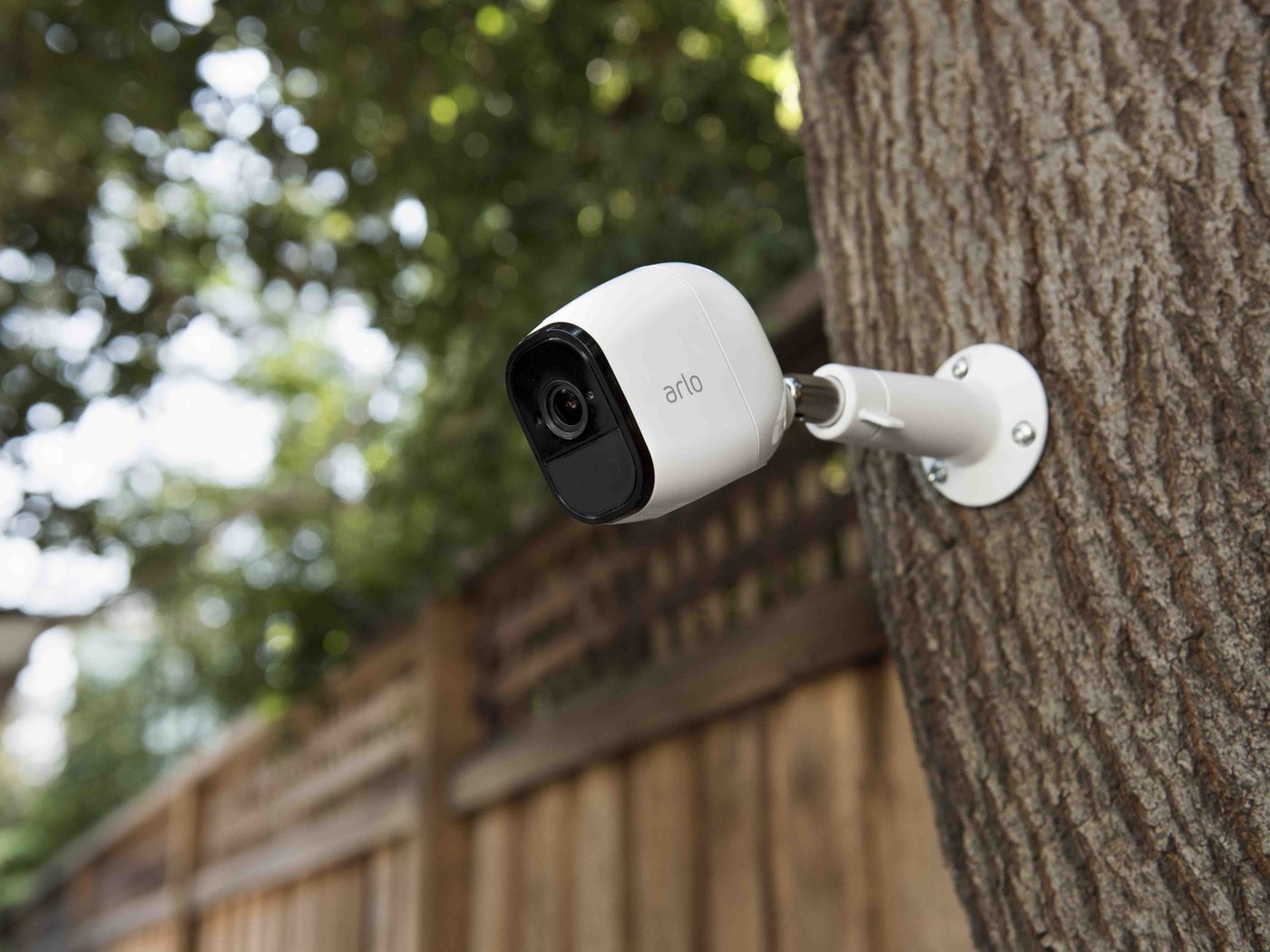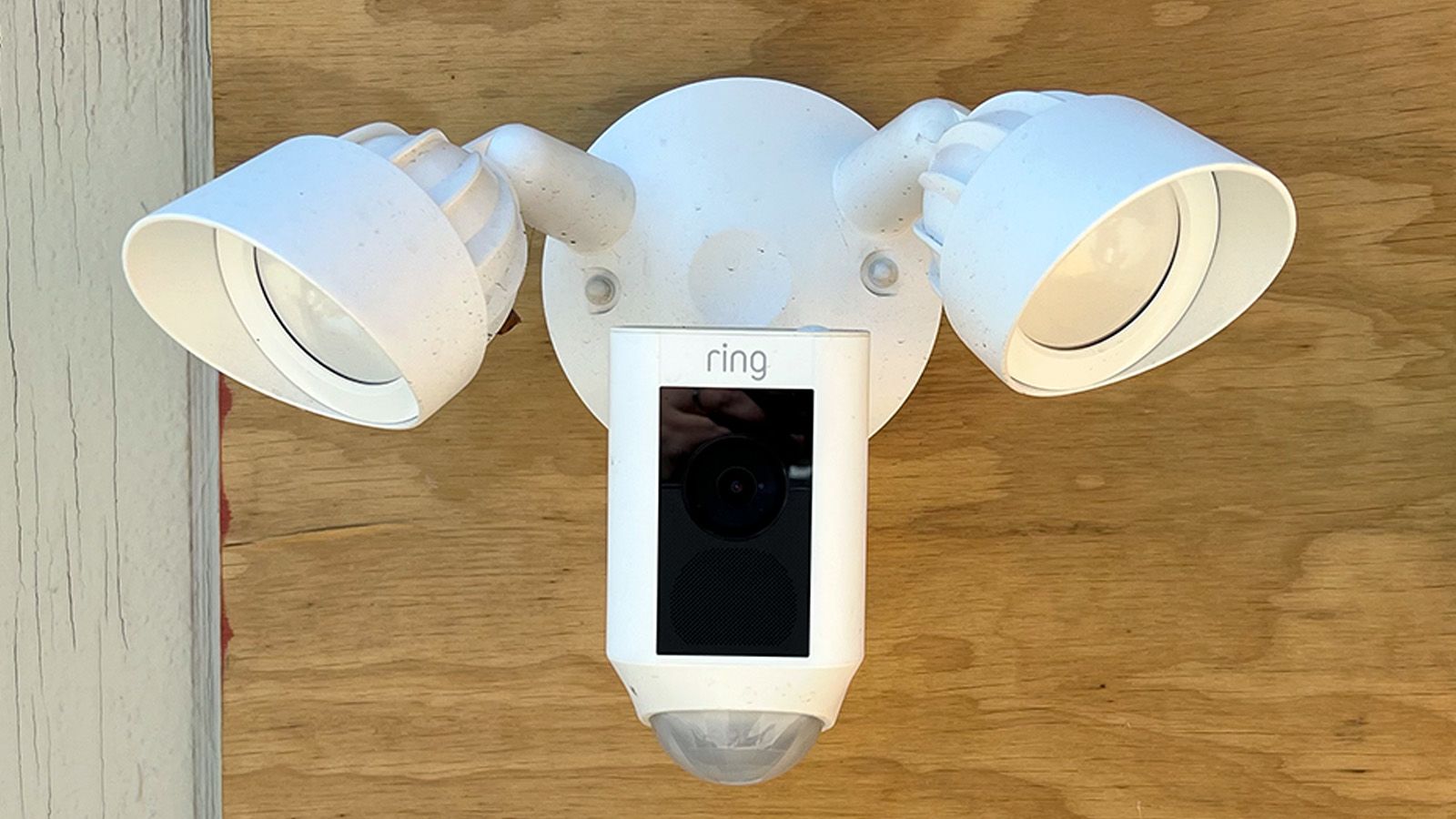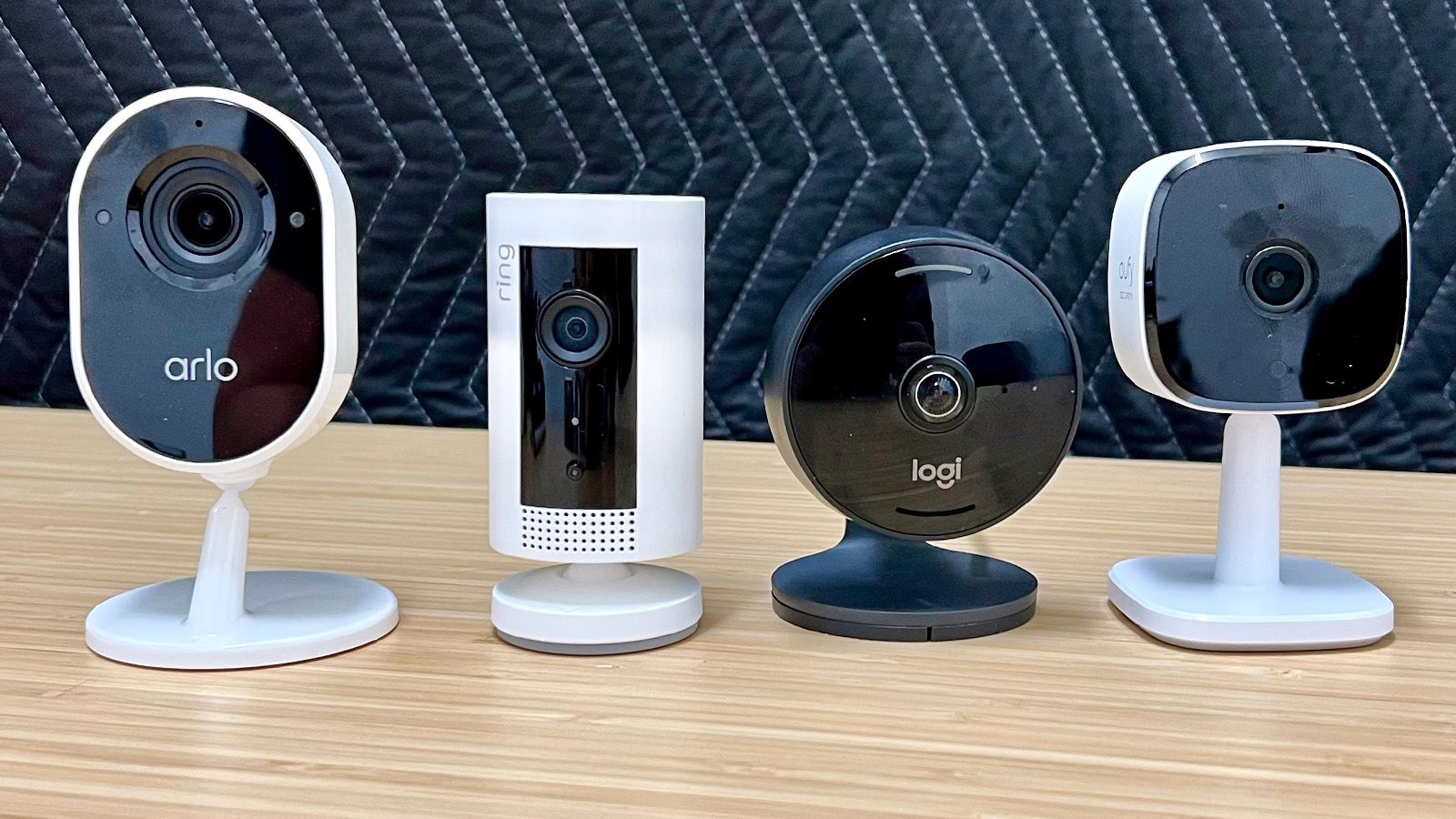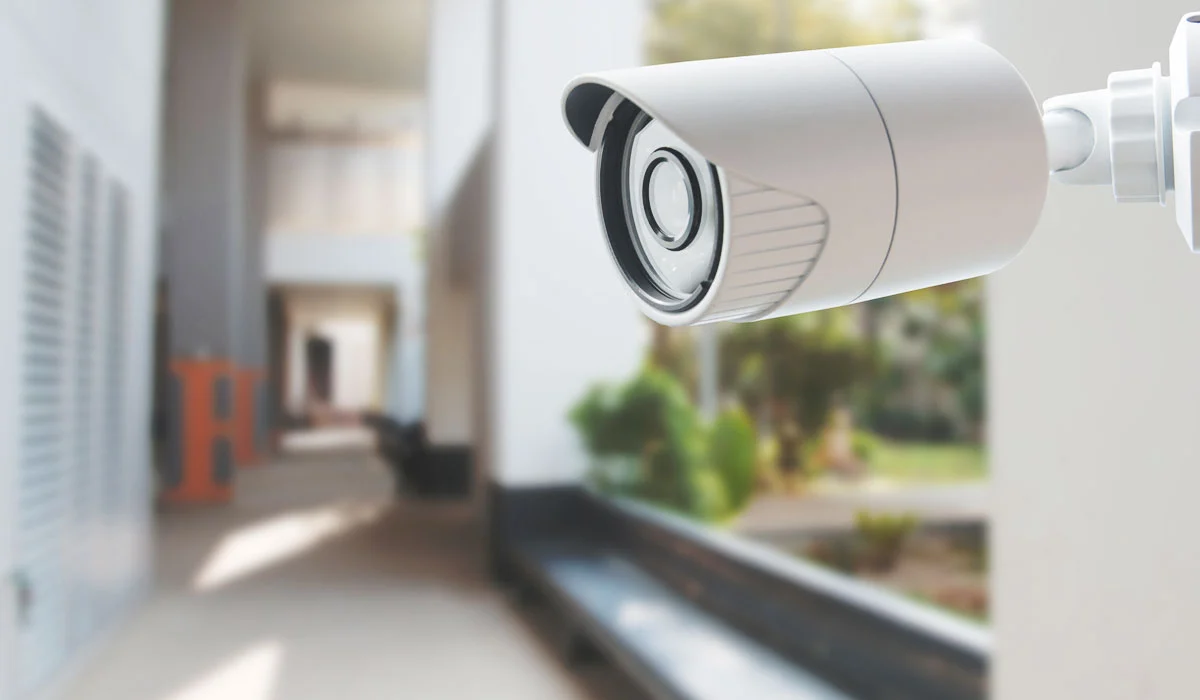Home>Home Security and Surveillance>What Are The Best Security Cameras For Your Home
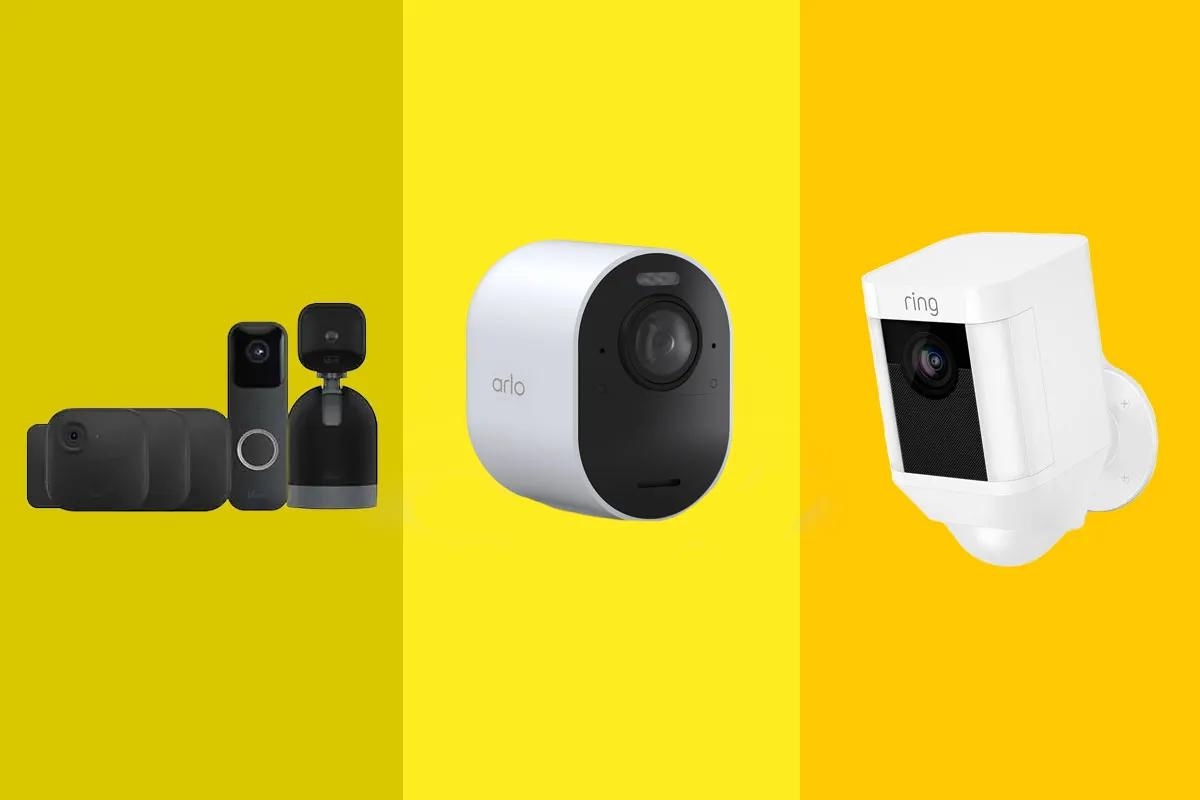

Home Security and Surveillance
What Are The Best Security Cameras For Your Home
Modified: March 6, 2024
Discover the top security cameras for your home with our comprehensive guide. Enhance your home security and surveillance with reliable and advanced options.
(Many of the links in this article redirect to a specific reviewed product. Your purchase of these products through affiliate links helps to generate commission for Storables.com, at no extra cost. Learn more)
Introduction
Home security is a top priority for many homeowners, and one of the most effective ways to protect your property is by installing security cameras. These cameras serve as an extra set of eyes, providing round-the-clock monitoring and deterring potential intruders. With advancements in technology, there are now a wide variety of security cameras available on the market, each with its own features and benefits.
When choosing security cameras for your home, it’s important to consider several factors to ensure that you make the right choice. Factors such as the type of camera, its placement, resolution, night vision capabilities, motion detection, and even integration with other smart home devices should be taken into account. In this article, we will explore the various types of security cameras available and provide insights into the best options for your home security needs.
Factors to Consider when Choosing Security Cameras
Before diving into the specifics of different types of security cameras, it’s important to consider some key factors:
- Location: Determine where you want to install the cameras – both indoor and outdoor – to understand the specific requirements for each area.
- Budget: Set a budget for your home security system, including cameras, recording equipment, and any additional accessories.
- Scalability: Consider whether you may want to expand your security system in the future and choose cameras that can easily be added to the existing setup.
- Resolution: Opt for cameras with high-resolution capabilities to ensure clear and detailed footage.
- Connectivity: Decide between wired or wireless cameras, depending on your preferences and the layout of your home.
Now that we have covered the basic factors to consider, let’s explore the different types of security cameras available for your home.
Key Takeaways:
- Choose wired security cameras for stable connections and high resolution, or opt for wireless cameras for easy installation and remote access. Consider your specific needs for indoor or outdoor surveillance to make the best choice.
- Look for budget-friendly security camera options such as wireless indoor cameras, basic outdoor cameras, or wire-free cameras. Prioritize essential features within your budget to ensure effective surveillance and peace of mind.
Read more: What To Do If Your Security Camera Is Hacked
Factors to Consider when Choosing Security Cameras
When it comes to choosing security cameras for your home, there are several important factors to consider. By carefully evaluating these factors, you can ensure that you select the cameras that best meet your specific needs and provide the level of security and surveillance you desire. Here are some key considerations:
- Location: The first factor to consider is where you plan to install the security cameras. Are you looking to monitor the interior or exterior of your home? Determine the specific areas you want to cover to determine the ideal types of cameras and their placement.
- Budget: Set a budget for your home security system, including the cost of the cameras, recording equipment, and any additional accessories. This will help you narrow down your options and prevent overspending.
- Scalability: Consider whether you may want to expand your security system in the future. Choose cameras that are compatible with other devices and can be easily added to your existing setup.
- Resolution: The resolution of your security cameras directly affects the quality of the footage. Higher resolution cameras provide clearer and more detailed images, making it easier to identify faces or license plates if needed.
- Connectivity: Decide between wired or wireless cameras based on your preferences and the layout of your home. Wired cameras require cabling for power and data transmission, while wireless cameras run on batteries or connect to your home’s Wi-Fi network.
- Weatherproofing: If you plan to install outdoor security cameras, ensure that they are designed to withstand various weather conditions. Look for cameras with an IP (Ingress Protection) rating to ensure they are waterproof and durable.
- Night Vision: Consider cameras with night vision capabilities if you want to monitor your property during the nighttime. Look for cameras with infrared LEDs or low-light sensors that can provide clear images in low-light conditions.
- Motion Detection: Look for cameras that offer motion detection features. This allows the camera to automatically start recording when motion is detected, providing you with important footage and reducing the amount of unnecessary recordings.
- Two-Way Audio: Some cameras offer two-way audio functionality, allowing you to communicate with people near the camera. This can be useful for greeting guests or deterring potential intruders.
- Smart Home Integration: Consider cameras that are compatible with your smart home ecosystem. Integration with devices like smart speakers or voice assistants enables convenient control and monitoring of your security system.
By taking these factors into account, you can make an informed decision when selecting security cameras for your home. Keep in mind that the best cameras for your needs may vary depending on your specific requirements and preferences. In the following sections, we will explore the different types of security cameras available and discuss their features and benefits.
Wired Security Cameras
Wired security cameras are a traditional and reliable option for home surveillance. These cameras are physically connected to a power source and a central recording device using cables. Here are some key features and benefits of wired security cameras:
- Stability and Reliability: Wired cameras provide a stable and reliable connection since they are directly connected to a power source and recording device. This ensures consistent video streaming and eliminates the risk of signal interference.
- Higher Resolution: Wired cameras often offer higher resolution options compared to wireless cameras. This allows for clearer and more detailed footage, which can be crucial for identifying important details or individuals in the footage.
- Continuous Power Supply: Being directly wired to a power source means that wired cameras have a continuous power supply. This eliminates the need to worry about battery life or recharging, ensuring uninterrupted surveillance.
- Longer Range: Wired cameras can be placed further away from the recording device since they are not dependent on wireless signals. This allows for greater flexibility in camera placement, especially for larger properties.
- Secure Connection: Since wired cameras do not rely on wireless signals, they are less susceptible to hacking or interference. This provides an added layer of security, ensuring that your surveillance footage remains protected.
While wired security cameras have numerous benefits, it’s important to consider the drawbacks as well:
- Installation Complexity: Installing wired cameras requires running cables and connecting them to the recording device. This can be time-consuming and may require professional assistance, especially for retrofitting existing homes.
- Limited Flexibility: Once installed, wired cameras are fixed in their positions, limiting their flexibility for future repositioning or relocation.
- Potential Cable Damage: The cables connecting the cameras to the recording device can be susceptible to damage from weather conditions or tampering. Regular maintenance and protection measures are necessary to prevent cable damage.
When considering wired security cameras, it’s important to evaluate your specific needs and the layout of your home. If stability, reliability, and higher resolution are top priorities, wired cameras can be an excellent choice for your home security system.
Wireless Security Cameras
Wireless security cameras have become increasingly popular due to their ease of installation and flexibility. These cameras rely on wireless signals to transmit video footage to a recording device or directly to your mobile device. Here are some key features and benefits of wireless security cameras:
- Easy Installation: Wireless cameras are much easier to install compared to their wired counterparts. They do not require running cables, which makes them a suitable option for both renters and homeowners.
- Flexibility in Placement: Wireless cameras can be easily moved and repositioned without the need for additional wiring. This flexibility allows you to adapt your surveillance system as needed, whether it’s monitoring different areas of your property or temporarily relocating cameras for special events.
- Remote Viewing: Most wireless cameras offer remote viewing capabilities, allowing you to access live video footage and recordings from anywhere using your smartphone or computer. This provides peace of mind, as you can keep an eye on your home even when you’re away.
- Battery Operated: Many wireless cameras are powered by batteries, eliminating the need for a continuous power supply. This makes them ideal for locations where it’s challenging to run wires or during power outages.
- Expandable and Scalable: Wireless security cameras often offer the option to expand your system by adding additional cameras as needed. This scalability allows you to customize your surveillance setup based on your evolving needs.
- Smart Integration: Wireless cameras can be integrated with other smart home devices, such as smart speakers or voice assistants. This enables convenient control and monitoring of your security system through voice commands or centralized applications.
While wireless security cameras offer numerous benefits, it’s important to consider the drawbacks as well:
- Potential Signal Interference: Wireless cameras transmit video signals over Wi-Fi or radio frequencies, which can be susceptible to interference from other devices or physical obstacles. Ensure that your network is secure and choose cameras with high-quality wireless capabilities to minimize signal interruption.
- Battery Maintenance: Wireless cameras powered by batteries require regular battery maintenance or recharging. Monitoring battery life and having replacement batteries on hand is essential to ensure uninterrupted surveillance.
- Lower Resolution Options: In some cases, wireless cameras may offer lower resolution options compared to their wired counterparts. This can affect the clarity and detail of the recorded footage.
When considering wireless security cameras, it’s essential to evaluate your specific needs, the layout of your home, and the reliability of your Wi-Fi network. If easy installation, flexibility, and remote access are important to you, wireless cameras can provide an excellent solution for your home security system.
Indoor Security Cameras
Indoor security cameras are designed specifically for monitoring and protecting the interior of your home. These cameras are typically smaller and more discreet in appearance to blend seamlessly into your home decor. Here are some key features and benefits of indoor security cameras:
- Discreet and Compact: Indoor security cameras are often smaller and more inconspicuous, allowing them to be easily placed around your home without drawing attention. They can be hidden in various objects or mounted discreetly on walls or ceilings.
- Wide Viewing Angle: Many indoor cameras offer a wide field of view to monitor larger areas with a single camera. This is especially beneficial in open floor plans or rooms where you want to cover a broad area.
- Live Streaming: Indoor cameras typically provide live streaming capabilities, allowing you to view real-time footage of the monitored area. This allows you to keep an eye on children, pets, or remote areas of your home while you are away.
- Two-Way Audio: Some indoor cameras come equipped with two-way audio functionality, enabling you to communicate with individuals in the room. This can be useful for interacting with family members, checking in on pets, or even speaking to intruders to deter them.
- Motion and Sound Detection: Indoor cameras often have advanced motion and sound detection features. When motion or sound is detected, the camera can send alerts to your mobile device, allowing you to quickly respond to any potential security threats.
- Privacy Features: Privacy is of utmost importance, especially for indoor security cameras. Look for cameras with features like motion-activated recording, privacy modes, or the ability to schedule when the camera is active to ensure that your privacy is respected.
When selecting indoor security cameras, it’s important to consider the specific areas you want to monitor, the desired level of discretion, and the features that best align with your security needs. Additionally, take into account the connectivity options and integration capabilities with your existing smart home devices.
Overall, indoor security cameras provide an essential layer of protection for your home’s interior. They allow you to monitor your living spaces, keep an eye on loved ones, and provide peace of mind through real-time monitoring and remote access.
Read more: What Is The Best Security Camera For Home
Outdoor Security Cameras
Outdoor security cameras are specifically designed to withstand various weather conditions and provide surveillance for the exterior of your home. These cameras are built to be rugged and durable, providing reliable monitoring and protection. Here are some key features and benefits of outdoor security cameras:
- Weatherproof and Durable: Outdoor cameras are designed to withstand harsh weather conditions, such as rain, snow, heat, and dust. Look for cameras with high IP ratings (Ingress Protection) to ensure they are waterproof and resistant to environmental elements.
- Night Vision: Many outdoor cameras come equipped with night vision capabilities, allowing them to capture clear footage even in low-light or complete darkness. This is crucial for monitoring the perimeter of your property during nighttime hours.
- Wide Angle and Long-Range Monitoring: Outdoor cameras often have a wide viewing angle to cover larger outdoor areas with a single camera. Additionally, they may have long-range capabilities to capture footage from a distance, making them suitable for monitoring driveways, gardens, or entry points.
- Motion Detection: Outdoor cameras are typically equipped with motion detection sensors to instantly detect any movement and trigger recording. This feature helps to reduce false alarms and ensures that you capture important events or potential threats.
- Remote Access and Mobile Alerts: Most outdoor cameras offer remote access capabilities, allowing you to view live footage and receive mobile alerts when motion is detected. This enables you to monitor and respond to potential security incidents, even when you’re not at home.
- Vandal-Resistant: Outdoor cameras often have additional protective features to prevent tampering or vandalism, such as durable housings and anti-tamper brackets. This ensures that your cameras remain functional and continue to provide reliable surveillance.
When choosing outdoor security cameras, consider factors such as the specific areas you want to monitor, the desired range and field of view, and the level of weather protection required. It’s important to select cameras that are suitable for your climate and provide the necessary features to ensure effective outdoor surveillance.
Outdoor security cameras play a crucial role in securing the perimeter of your home, deterring potential intruders, and providing valuable evidence in case of any incidents. With their robust construction and advanced features, they offer reliable and comprehensive outdoor surveillance to enhance the safety of your property.
Night Vision Cameras
Night vision cameras are specifically designed to provide clear monitoring and surveillance capabilities in low-light or no-light conditions. These cameras use infrared (IR) technology to detect and capture images even in complete darkness, ensuring 24/7 surveillance coverage. Here are some key features and benefits of night vision cameras:
- Infrared Illumination: Night vision cameras utilize infrared illumination to capture images in the absence of visible light. These cameras emit infrared light that is invisible to the human eye but is detected by the camera’s image sensor.
- Clear Visibility in the Dark: Night vision cameras can capture clear and detailed footage even in complete darkness. This is particularly important for outdoor surveillance, where lighting conditions may be limited.
- Different Levels of Infrared Range: Night vision cameras come with varying levels of infrared range. Some cameras can provide clear images up to a few meters away, while others can cover larger distances, such as the perimeter of a backyard.
- Automatic Activation: Most night vision cameras have built-in sensors that detect changes in lighting conditions. When the light levels drop below a certain threshold, the camera automatically switches to night vision mode, ensuring continuous surveillance coverage without manual intervention.
- Monochrome or Color Options: Night vision cameras can capture footage in monochrome or color, depending on the model. Monochrome images provide higher contrast and detail in low-light conditions, while color images offer more natural representation in well-lit areas.
- Remote Viewing and Recording: Night vision cameras often come equipped with remote viewing capabilities, allowing you to monitor live footage and recordings remotely using your smartphone or computer. This ensures that you can keep an eye on your property even when you’re away.
When selecting night vision cameras, consider factors such as the range of infrared coverage, the desired image quality, and the specific areas you want to monitor in low-light conditions. It’s important to choose cameras with sufficient infrared range to cover the areas you need to monitor effectively.
Night vision cameras are particularly useful for both indoor and outdoor surveillance. They provide a reliable and effective solution for 24/7 monitoring, ensuring that your home remains secure even during the darkest hours of the night.
When choosing security cameras for your home, look for ones with high resolution, night vision, motion detection, and remote access. These features will help ensure that your home is well-protected.
Motion-Activated Cameras
Motion-activated cameras are an excellent addition to any home security system, as they offer enhanced surveillance capabilities while conserving storage space. These cameras are designed to detect movement and automatically start recording or send alerts when motion is detected. Here are some key features and benefits of motion-activated cameras:
- Smart Detection Technology: Motion-activated cameras utilize advanced detection technology, such as passive infrared sensors or pixel-based motion detection. These sensors detect changes in the infrared radiation or pixel patterns caused by movement, triggering the camera to record or send an alert.
- Minimized Storage Usage: By activating only when motion is detected, these cameras significantly reduce the amount of storage space needed to store video footage. Rather than continuously recording, they focus on capturing relevant events, optimizing storage capacity.
- Reduced False Alarms: Motion-activated cameras are designed to distinguish between genuine motion events and false alarms triggered by things like moving trees, shadows, or animals. This helps to minimize unnecessary alerts and ensure that you only receive notifications for significant events.
- Customizable Sensitivity and Detection Zones: Many motion-activated cameras allow you to adjust the sensitivity level and define specific areas or zones for detection. This enables you to fine-tune the camera’s response and focus on the areas that are most important for monitoring.
- Real-Time Notifications: When motion is detected, motion-activated cameras can send real-time notifications to your mobile device or email, keeping you informed of any activity on your property. This allows for immediate action or remote monitoring.
- Flexible Recording Options: Depending on the camera model and features, motion-activated cameras can offer various recording options, such as continuous recording, scheduled recording, or recording triggered by motion only. Choose the option that best suits your needs and storage requirements.
When selecting motion-activated cameras, consider factors such as the sensitivity adjustment options, the coverage area of the detection zone, and the type of notifications supported. It’s important to choose cameras that accurately detect motion while minimizing false alarms.
Motion-activated cameras provide an effective way to monitor your home without the need for continuous recording. By capturing relevant events and providing instant notifications, these cameras enhance the overall security of your property and allow you to quickly respond to potential threats or incidents.
Two-Way Audio Cameras
Two-way audio cameras offer an interactive and communicative aspect to your home security system. These cameras enable you to not only see what’s happening but also to hear and speak to individuals near the camera. Here are some key features and benefits of two-way audio cameras:
- Real-Time Communication: Two-way audio cameras allow you to have real-time conversations with anyone near the camera. This can be useful for greeting guests, communicating with family members, or interacting with delivery personnel.
- Deterring Potential Intruders: The ability to speak through the camera can act as a deterrent to potential intruders. By voicing your presence, you can effectively discourage unauthorized individuals from entering your property.
- Monitoring Pets or Children: Two-way audio cameras enable you to check in on your pets or children while you’re away. You can keep an eye on their activities and interact with them, providing reassurance and ensuring their well-being.
- Remote Communication: With the remote access feature, you can use your smartphone or computer to listen and speak through the camera, no matter where you are. This allows you to remotely communicate with anyone near the camera, even if you’re not physically present at home.
- Customizable Audio Settings: Many two-way audio cameras offer customizable audio settings, allowing you to adjust the volume, microphone sensitivity, or speaker output to suit your preferences and specific monitoring needs.
- Convenient Integration: Some two-way audio cameras integrate with voice assistants or smart home systems, enabling hands-free control and interaction. You can use voice commands to activate the camera, listen to audio, or speak through the camera without needing to use your mobile device.
When selecting two-way audio cameras, consider features such as audio quality, microphone range, and speaker volume. It’s important to choose cameras that provide clear and reliable audio communication for effective interaction.
Two-way audio cameras add an extra layer of functionality and engagement to your home security system. By being able to listen and communicate through the camera, you can enhance the safety and convenience of your home, while maintaining peace of mind.
Smart Home Integration
Smart home integration is an important consideration when choosing security cameras for your home. This feature allows your security cameras to seamlessly connect and interact with other smart devices in your home ecosystem. Here are some key features and benefits of smart home integration:
- Centralized Control: Smart home integration allows you to control and manage your security cameras, along with other smart devices, from a centralized hub or mobile application. This simplifies the process of monitoring and managing your home security system.
- Voice Control: Many security cameras can be integrated with popular voice assistants like Amazon Alexa or Google Assistant. This enables hands-free control and interaction, allowing you to use voice commands to view live feeds, adjust settings, or receive status updates.
- Automation and Scenes: Integrating security cameras with your smart home system allows you to create custom automation routines and scenes. For example, you can set up a scene that automatically turns on your security cameras, locks the doors, and adjusts the lights when you activate the “Away” mode.
- Triggered Actions: Smart home integration enables security cameras to trigger actions based on events or conditions. For instance, when a motion is detected by the cameras, it can prompt the smart lighting system to turn on the lights or notify the security monitoring service.
- Enhanced Monitoring and Alerts: By integrating your security cameras with other smart devices, you can enhance monitoring capabilities. For instance, you can receive alerts on your smartphone when the security camera detects motion, and simultaneously view the live video feed for real-time assessment.
- Energy Efficiency: Smart integration allows you to optimize energy usage and conserve resources. For example, you can set schedules for your security cameras to operate only during specific hours or when certain conditions are met, minimizing power consumption.
When considering smart home integration, ensure that the security cameras you choose are compatible with your preferred smart home ecosystem. Verify if the cameras have support for the specific voice assistant or smart hub you utilize.
Smart home integration enhances the convenience and functionality of your security cameras, providing you with a seamless and integrated home security experience. By aligning your security cameras with your smart home system, you can achieve a more efficient, connected, and automated approach to home security.
Recording and Storage Options
Recording and storage options are crucial considerations when selecting security cameras for your home. These features determine how your camera records and stores video footage, ensuring that you have access to the recorded data when needed. Here are some key recording and storage options to consider:
- Local Storage: Many security cameras offer local storage options, such as built-in SD card slots or a dedicated hard drive. This allows the camera to directly save recorded footage to the storage device without the need for an external recorder. Local storage provides you with immediate access to the recorded videos.
- Cloud Storage: Cloud storage is an increasingly popular option for storing security camera footage. With cloud storage, your camera uploads the recorded videos to a secure online server. This eliminates the risk of losing footage due to damage or theft of the local storage device. Cloud storage also allows for remote access to your recordings from anywhere with an internet connection.
- Subscription Plans: Some security camera manufacturers offer subscription plans for cloud storage. These plans may offer additional features like extended storage capacity, advanced video analytics, or longer video retention periods. Evaluate the pricing and terms of the subscription plans to determine if they align with your budget and storage needs.
- Continuous Recording: Continuous recording is a setting that allows the camera to record video footage continuously, regardless of motion detection. This ensures that every moment is captured, but also requires a larger storage capacity as the footage is being recorded non-stop.
- Motion-Activated Recording: Motion-activated recording is a popular option for conserving storage space. The camera only starts recording when motion is detected, saving storage capacity by eliminating redundant footage. This is especially useful for cameras with limited storage capabilities or when using cloud storage subscription plans with data limits.
- Scheduled Recording: Some security cameras offer scheduled recording options, allowing you to set specific times for the camera to record. This is beneficial if you want to capture footage during specific hours of the day or sync recording with your daily routine.
When selecting recording and storage options, consider factors such as the required storage capacity, the reliability and accessibility of the storage method, and the associated costs. Assess your recording needs and decide which option best aligns with your preferences and security requirements.
By carefully considering recording and storage options, you can ensure that your security cameras effectively capture and retain the necessary video footage. This allows for easy access to recordings, whether they are saved locally or stored securely in the cloud.
Remote Monitoring and Control
Remote monitoring and control capabilities greatly enhance the functionality and convenience of your home security system. With these features, you can access and manage your security cameras from anywhere using mobile devices or computers. Here are some key aspects of remote monitoring and control:
- Live View: Remote monitoring allows you to view live video feeds from your security cameras in real time. Whether you’re at work, traveling, or simply away from home, you can stay connected to your property and monitor the surroundings with ease.
- Mobile Apps: Security camera manufacturers often provide dedicated mobile applications that enable remote access to camera feeds and settings. These apps allow you to view live video, receive notifications, adjust camera settings, and control other features from your smartphone or tablet.
- Desktop Access: In addition to mobile apps, many security camera systems offer remote access through web browsers on desktop or laptop computers. This provides flexibility and convenience, allowing you to monitor your home security from various devices.
- Two-Way Communication: With remote monitoring and control, you can not only see what’s happening but also communicate with individuals near the camera using the built-in two-way audio feature. This allows for interactive communication, whether it’s greeting guests, warning intruders, or speaking to family members while you’re away.
- Alerts and Notifications: Remote monitoring systems can send real-time alerts and notifications to your mobile device when specific events occur, such as motion detection or the activation of alarm sensors. This ensures that you’re promptly informed of any potential security threats, allowing for immediate action.
- Playback and Recording: Remote monitoring and control often provide the ability to access recorded footage from your security cameras. This allows you to review past events, save important clips, or share footage with authorities if necessary.
- Settings and Configuration: With remote access, you can adjust camera settings, configure motion detection sensitivity, create custom recording schedules, and perform firmware updates. This enables you to optimize your security system without needing physical access to the cameras.
When selecting security cameras, ensure that they offer compatible remote monitoring and control features that align with your specific needs. Check if the mobile apps or web interfaces are user-friendly and offer a seamless experience for remote access and management.
Remote monitoring and control empower you to stay connected to your home security system, effectively manage your cameras, and respond to potential security incidents in real time. This level of remote access and control provides you with peace of mind, knowing that you have constant visibility and control over your home’s security, no matter where you are.
Budget-Friendly Security Camera Options
Home security is important, and you don’t have to break the bank to ensure the safety of your property. There are several budget-friendly security camera options available that offer reliable surveillance without compromising on quality. Here are some cost-effective choices to consider:
- Wireless Indoor Cameras: Wireless indoor cameras are often more affordable than their outdoor counterparts. These cameras utilize your home’s Wi-Fi network for connectivity and offer features such as motion detection, night vision, and two-way audio. They are easy to install and can be placed strategically indoors to monitor key areas of your home.
- Basic Outdoor Cameras: Basic outdoor cameras provide essential surveillance for the exterior of your home at an affordable price. These cameras are weatherproof and offer features like motion detection and night vision. While they may not have all the advanced functionalities of higher-end models, they still provide a reliable deterrent and monitoring solution for your outdoor spaces.
- Wire-Free Cameras: Wire-free cameras are battery-powered and do not require any wiring or electrical installation. They are a cost-effective option as they eliminate the need for professional installation or additional equipment. They are easy to install and provide flexible placement options both indoors and outdoors.
- DIY Systems: DIY security camera systems allow you to customize and scale your surveillance setup according to your budget. These systems typically include multiple cameras and a central recording device. With a bit of technical knowledge, you can set up the system yourself, saving on installation costs.
- Refurbished Cameras: Consider purchasing refurbished security cameras from reputable manufacturers. Refurbished cameras are often restored to like-new condition, offering a more budget-friendly alternative to brand-new models. Just ensure that the cameras come with a warranty and are certified by the manufacturer.
- Cloud Storage Plans: If your budget is limited, consider security cameras that offer free or affordable cloud storage plans. These plans allow you to store a limited amount of video footage in the cloud, ensuring that you have access to recordings without investing in expensive storage devices.
When exploring budget-friendly options, focus on the features that are essential for your security needs. This way, you can prioritize the functionalities that matter most to you while still staying within your budget.
Remember, while budget-friendly security cameras may have some limitations in terms of advanced features or video resolution, they can still provide effective surveillance and peace of mind. Evaluate your requirements, compare different options, and choose the cameras that offer the best value for your budget.
Read more: What Is The Best Wireless Security Camera
Conclusion
Choosing the right security cameras for your home is a crucial step in ensuring the safety and protection of your property. With a wide range of options available, considering factors such as camera type, resolution, connectivity, placement, and features is essential in making an informed decision.
Wired security cameras provide stable connections, higher resolutions, and continuous power supply, making them a reliable choice for those seeking a traditional and robust surveillance solution. On the other hand, wireless security cameras offer easy installation, flexibility in placement, and remote access capabilities, making them ideal for those who prioritize convenience and mobility.
When selecting security cameras, consider whether your needs are focused on indoor or outdoor surveillance. Indoor cameras are discreet and offer features like wide viewing angles, two-way audio, and motion detection, making them suitable for monitoring specific areas inside your home. Outdoor cameras, designed to withstand various weather conditions, provide night vision, long-range monitoring, and enhanced durability to ensure comprehensive surveillance of your home’s perimeter.
Additional features such as night vision, motion activation, two-way audio, smart home integration, recording and storage options, remote monitoring, and budget-friendly choices should all be assessed based on your security needs and preferences.
In conclusion, the best security cameras for your home will depend on various factors, including your specific requirements, budget, and desired features. By carefully considering these factors, you can select the cameras that provide optimal surveillance and contribute to the overall safety and protection of your home.
Remember to thoroughly research different brands and models, read customer reviews, and consult with professionals if needed, to ensure that you make an informed decision. By investing in the right security cameras, you can enjoy peace of mind knowing that your home is protected around the clock.
Frequently Asked Questions about What Are The Best Security Cameras For Your Home
Was this page helpful?
At Storables.com, we guarantee accurate and reliable information. Our content, validated by Expert Board Contributors, is crafted following stringent Editorial Policies. We're committed to providing you with well-researched, expert-backed insights for all your informational needs.
